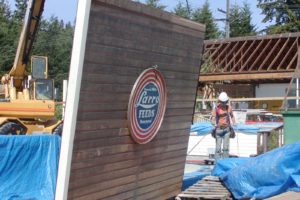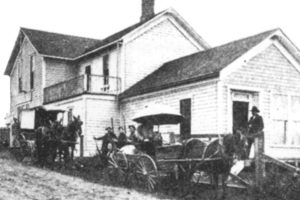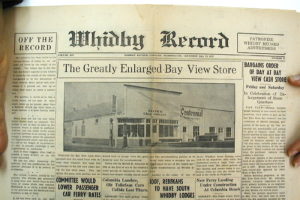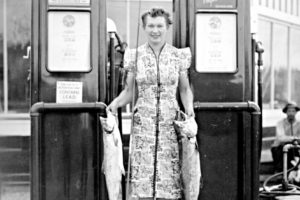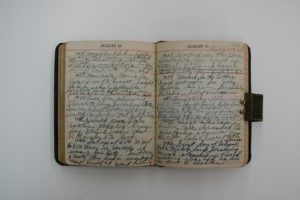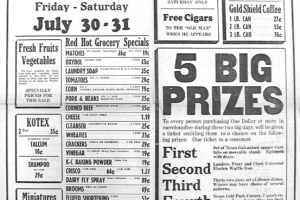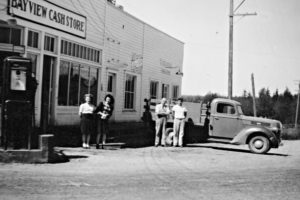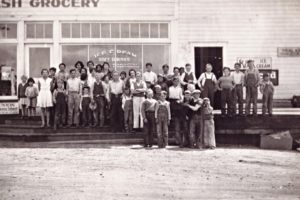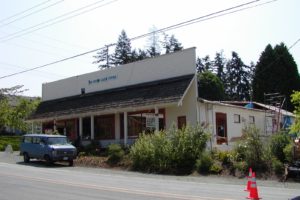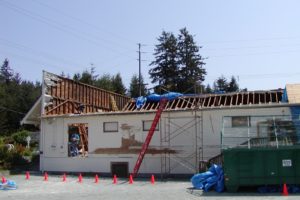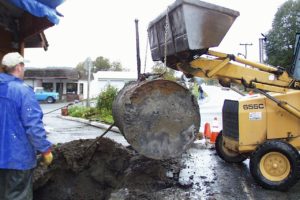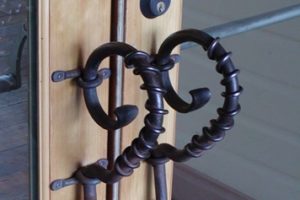Bayview Cash Store (1924)
Since 1924, the Bayview Cash Store has provided residents and visitors with goods, services, art, and entertainment.
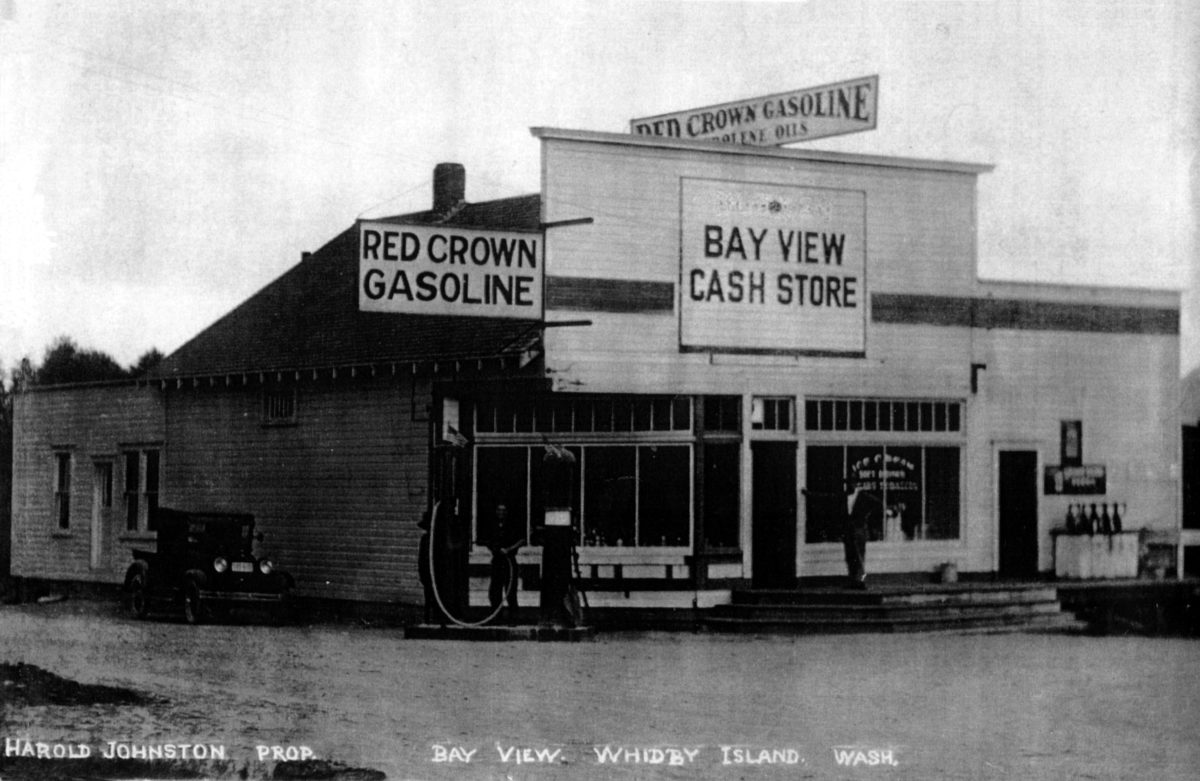
Early History
The first Bayview Cash Store was built about 1908 by Adolph Meier, up from a small wharf at the outfall of Lone Lake. The store stocked basic groceries for settlers and feed for their animals. In 1916, the store burned down and the area did without a general store for eight years.

In 1924, William Burk built a new Bayview Cash Store in its current location, featuring general merchandise and farm supplies. Burk strategically located the Cash Store so anyone traveling from Clinton or Langley had to pass through the “crossroads” where the store was located. His store was soon the social and geographical center of Bayview and South Whidbey.
Harold Johnston, just 29 at the time, bought the Cash Store in 1930. He had grown up nearby on a 40-acre farm on Lancaster Road on Double Bluff. After moving to Oak Harbor during high school, he married Marie Bultman and they had two sons, Ronald and Ray. Their marriage didn’t last long. Then in 1938, Harold married Betty Schmidt, four years after she started working at the Cash Store. They had a daughter named Judy.
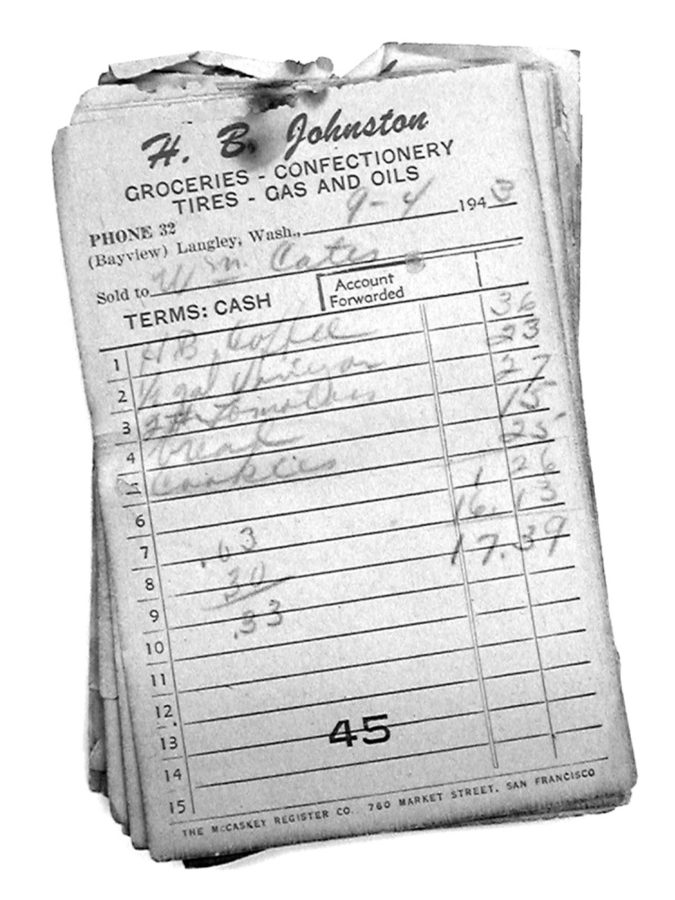
During the Great Depression, Johnston went out of his way to help his Bayview neighbors. Carrie Ramstad Melendy worked at the Cash Store recalls that during that time:
“…Harold Johnston gave away food beyond what anybody realized. Boxes and boxes of groceries went out of that Bayview store that people never did pay for because they couldn’t.”
Johnston Era Ends
After 45 years, Johnston sold the Cash Store to Jack and Grace Cortes in 1975. Bill Lanning, Jr. purchased it in 1985, restored the exterior and remodeled the interior, and opened Bill’s Feed and Tack. He sold the building to Don Azar in 1994, and the feed and tack store was replaced by a bicycle shop, an art store and a gallery.


Goosefoot Enters the Picture
In 1999, with the Cash Store aging and in disrepair, the owners were considering selling it. The community was in danger of losing a central gathering place and an important piece of South Whidbey history.
A pivotal conversation in the Cash Store parking lot between Nancy Nordhoff, South Whidbey resident and philanthropist, and Linda Moore, well versed in real estate law and economic development, turned things around. Their 1999 meeting resulted not only in the purchase of the building, but also of 22 acres surrounding the site. It also led to the formation of a new nonprofit, Goosefoot.
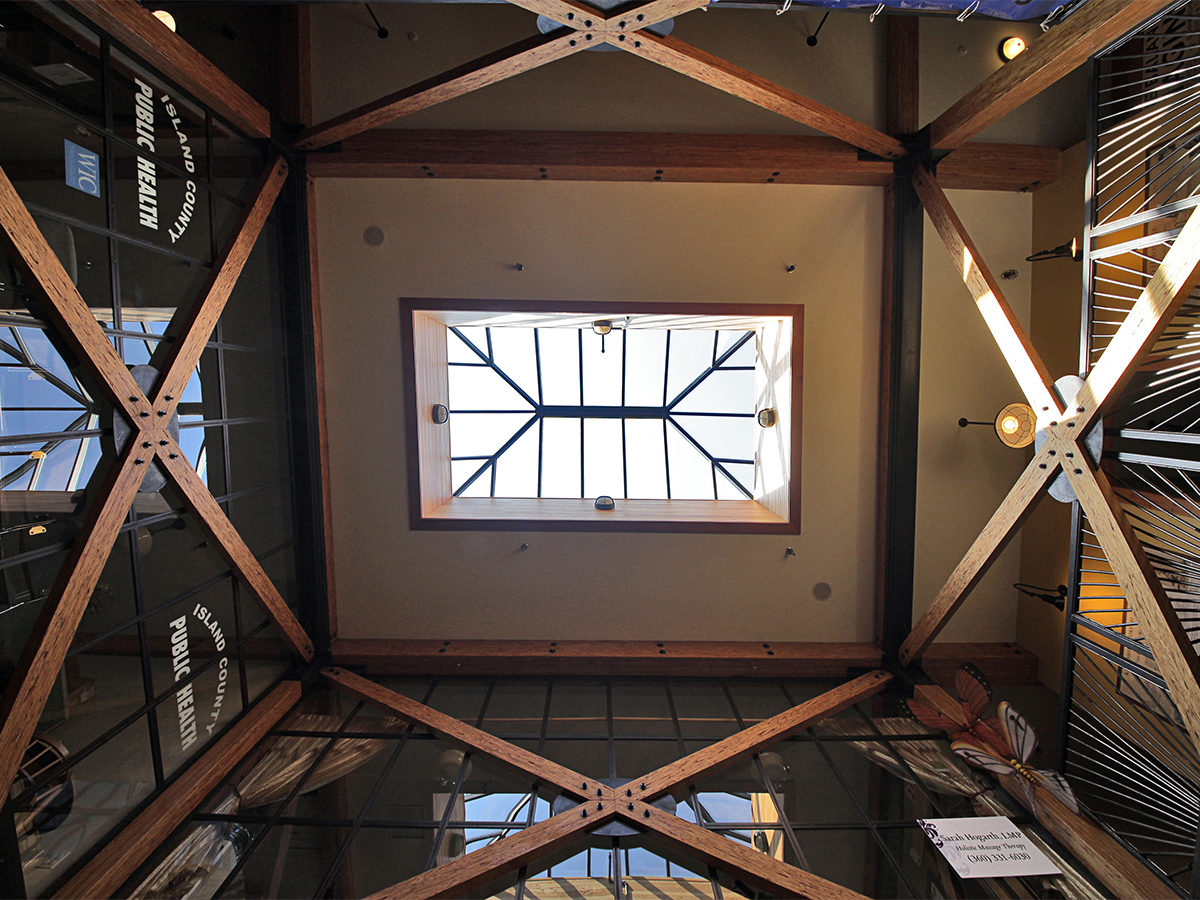
With the goals of environmental integrity, economic development and community vitality, Goosefoot’s first task was to restore the Cash Store, which had grown to four buildings cobbled together over the years. With a need to expand the usable space, update systems, as well as a desire to honor the spirit and history of this historic mercantile, the decision was made to use traditional forms and materials but avoid a literal reproduction. The building footprint did not increase. Nor did it move from its original location.
During its deconstruction, the Cash Store revealed some of its secrets. Newspapers from the 1920s and ’30s were found in the old walls. An official document certifying cattle in the area to be tuberculosis free and sales receipts for spuds, cigars and sugar were among the daily treasures found during the demolition.

The gifted designers of Flat Rock Productions, in collaboration with a very talented construction crew hand-picked by Goosefoot for this project, raised the bar for design and craftsmanship. You can’t help but notice the materials and the fine details. Our efforts were rewarded when the South Whidbey Historical Society presented its inaugural Heritage Award to Goosefoot in recognition of our work on the Cash Store.

